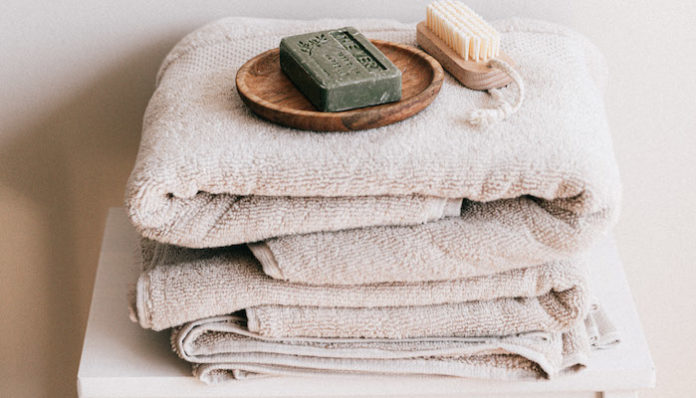
Much like with anything related to health and beauty, the Millennial world has found another #lifehack to worship — dry brushing. To put it simply, it’s a form of mechanical exfoliation where an exfoliator works to remove dead skin by physically scrubbing it off. In most cases, the exfoliator is a wooden brush that you’ve had in your shower caddy for what feels like decades.
Similar to jade rollers and cellulite creams, dry brushing has a huge cult-like following. While many people strongly believe in using this slightly strange method, others are strictly against the technique. That leaves make me wonder — is it good or bad for you?
After doing some online research and speaking with my dermatologist, I’ve collected a lot of information that may provide some helpful insight to anyone looking for answers about the worth of this method.
What are the benefits?
The main benefit is obviously exfoliation. The physical act of rubbing the bristles against your skin helps loosen and remove dead skin cells which smoothens your skin. Some may even argue that it helps with lymphatic drainage (AKA the system that drains fluids and toxins from your body).
Are there some downsides?
Many medical articles online and my dermatologist argue that there are no studies to support the positive effects of dry brushing. So, medically speaking, they can’t confirm whether it’s bad or good. For example, brushing towards your heart could potentially improve your lymph drainage, circulation of blood flow. But it’s not certain to work or transform your health for the better.
Does it help with cellulite?
Because there are no scientific studies supporting this technique, there is no way to tell if you can actually remove cellulite through this practice. So what that really means is you can try it, but you shouldn’t be disappointed if you don’t see results. What’s more, it’s not recommended if you have dry or sensitive skin since it will irritate it more.
So the internet has spoken — this method is doubtful and not recommended for certain skin types. But if you still want to try it, there are some advice to make sure that you’re doing it as safely as possible.
1. Use the right type of brush
Do not use a hairbrush. It may sound tempting, but it doesn’t serve the purpose it has to. The wooden brushes you usually find in drugstores, near the loofah and body wash, are the ones to look for. It doesn’t matter if it has a long wooden handle or a hand strap, it just has to have dense, natural bristles. This will ensure it is safe. Moreover, you can’t use a dry brush when it’s wet — it’s supposed to be dry for a reason.
2. Practice after care when dry brushing
Even though you don’t have to, you should jump into a shower afterward to rinse off the dead skin cells. It’s pretty much the same as when your feet get soaked during a pedicure after they’ve been scraped off of dead skin. However, you should avoid using soap full of suds since it strips oil from your body even more. Pat dry when you exit and use a moisturizer or body lotion to hydrate your skin.
3. Don’t overdo the number of times you do it
Again, we don’t know how safe it is for our skin. My dermatologist recommends limiting it to once each week, just to be safe.
4. Avoid it if you have certain skin conditions
Sensitive skin, eczema, rashes, or irritation should not be dry brushed. It’ll only inflame your skin more and cause painful irritation. It is also recommended not to dry brush your face, neck, armpits or anywhere with thinner skin — as dense bristles are too aggressive for those delicate areas.
After learning these facts, it’s totally up to you if you are willing to try this trend. Nevertheless, it can be harmful to your skin so it’s important to make the right decision for your own specific skin type. Just don’t be surprised if you don’t see any particular difference, much like a lot of online reviews have stated.
Featured image via Pexels


















